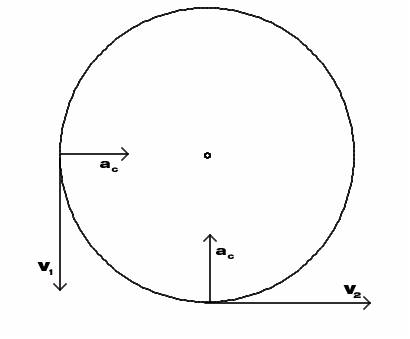Motion of Rotation:
We consider, now a particle moving along a circular path as illustrated in Figure (a). Let the radius of the circle be r. primarily the particle is at A. At time t, the particle takes the position B. Position vector OB makes an angle θ with OA, then θ may be termed as angular displacement.
∴ θ = f (t)
After a small interval of time Δt, the particle takes places the position C such that
∠ BOC = Δ θ as illustrated in Figure (b).

Then Δ θ / Δ t = average angular velocity.
and
Δ θ / Δ t as Δ t → 0 = dθ/ dt = instantaneous angular velocity = ω inst
Let ω, angular velocity of the particle at B and ω + Δ ω shall be angular velocity at C.
Then Δ ω / Δ t as Δ t → 0 = d ω / dt = α
It is defined as instantaneous angular acceleration and it work along the tangent to the circle at the point.
Since the particle moves along the circular path, let s be the distance travelled along the path.
Then s = r θ
Linear velocity of the particle at B may be obtained by
v = ds/dt = d /dt (r θ) = r ω
The velocity shall be oriented along the tangent at B as illustrated in Figure (a).
Likewise let v + Δ v be the linear velocity of the particle at C.
Then
dv/ dt = d/ dt (r ω) = r α shall be the linear acceleration along the tangent and r ω2 or v2/ r shall be the centripetal acceleration oriented towards the centre as illustrated in Figure (b).